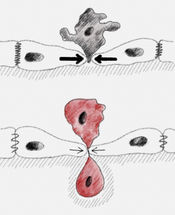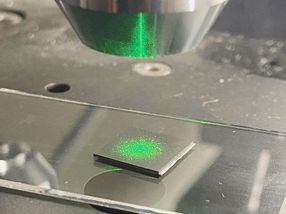Circulating tumor cells provide genomic snapshot of breast cancer
The genetic fingerprint of a metastatic cancer is constantly changing, which means that the therapy that may have stopped a patient's cancer growth today, won't necessarily work tomorrow. Although doctors can continue to biopsy the cancer during the course of the treatment and send samples for genomic analysis, not all patients can receive repeat biopsies. Taking biopsies from metastatic cancer patients is an invasive procedure that it is frequently impossible due to the lack of accessible lesions. Research published October 10th in the journal breast cancer Researchsuggest that tumor cells circulating in the blood of metastatic patients could give as accurate a genomic read-out as tumor biopsies.
"Counting the number of circulating tumor cells (CTCs) can tell us whether a patient's cancer is aggressive, or whether it is stable and responding to therapy," says the article's first author Sandra V. Fernandez, Ph.D., assistant professor of Medical Oncology at Thomas Jefferson University. "Our work suggests that these cancer cells in the blood also accurately reflect the genetic status of the parent tumor or its metastases, potentially giving us a new and easy to source of genomic information to guide treatment."
First discovered for their diagnostic potential in 2004, circulating tumor cells are beginning to be used in the clinic to help guide treatment decisions and track a patient's progress as the cancer progresses. Although other studies have pooled the collected CTCs and compared their collective genetic signature to that of the primary tumor, this is the first study to look at the genomic signature of individual tumor cells in circulation. In order to isolate single tumor cells from the blood, the authors used a new technology, DEPArrayTM , avaible in their laboratory.
The researchers compared tissue biopsies surgically removed from two patients with inflammatory breast cancer with circulating tumor cells (CTCs). Breast tissue samples from both patients showed a specific mutation in a region of a cancer-driving gene, p53. The authors studied this mutation in several CTCs isolated from both patients. They found that in several of the CTCs collected, the mutations matched with the tumor biopsy, however in one patient, some of circulating tumor cells had an additional mutation. "Since inflammatory breast cancer is a very rapidly changing disease, we think this additional mutation may have been acquired after the original surgical biopsy was taken," said Dr. Fernandez. In the case where an additional p53 mutation was found, the blood to isolate CTCs were drawn one year later than the breast tissue biopsy was taken.
Although further work analyzing a greater number of genes and samples is needed, the work shows that CTCs offer the possibility of capturing the most current genomic information in an easy-to-obtain sample such as blood, thus helping guide treatment decisions. It also suggests that it may be necessary to test more than one cell for the most accurate reading, as the CTC population appears to be heterogenous.
Most read news
Organizations
Other news from the department science

Get the life science industry in your inbox
By submitting this form you agree that LUMITOS AG will send you the newsletter(s) selected above by email. Your data will not be passed on to third parties. Your data will be stored and processed in accordance with our data protection regulations. LUMITOS may contact you by email for the purpose of advertising or market and opinion surveys. You can revoke your consent at any time without giving reasons to LUMITOS AG, Ernst-Augustin-Str. 2, 12489 Berlin, Germany or by e-mail at revoke@lumitos.com with effect for the future. In addition, each email contains a link to unsubscribe from the corresponding newsletter.





















































